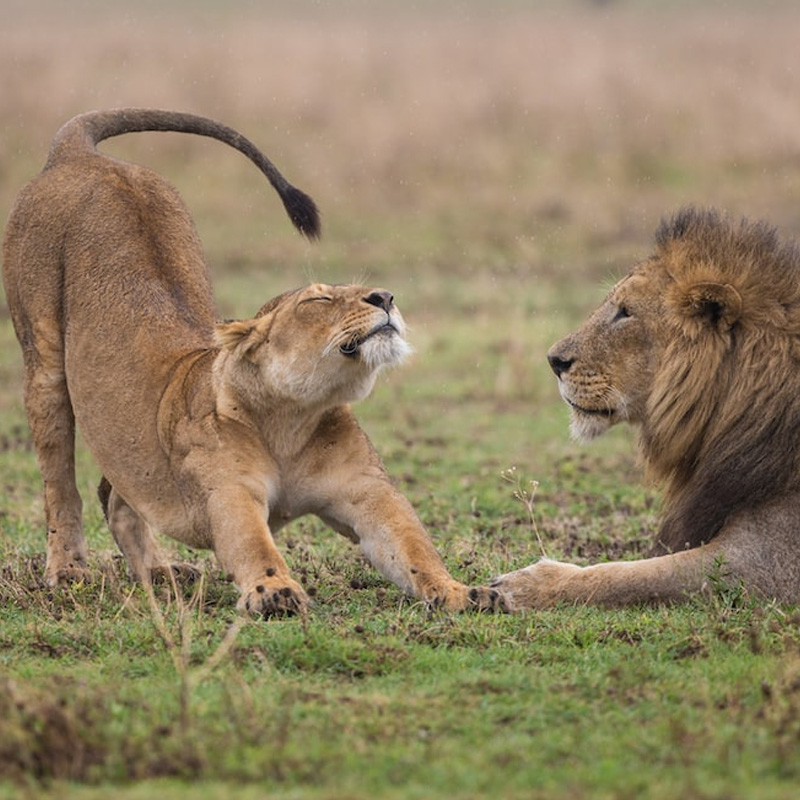Lake Manyara National Park
Lake Manyara National Park is a stunning wildlife reserve in Tanzania, East Africa. Covering 325 sq. km, the park is renowned for its diverse landscapes, from the eponymous alkaline lake, attracting flocks of pink flamingos, to lush forests and open savannahs. It is a sanctuary for various wildlife species, including elephants, giraffes, lions, and an array of colourful birdlife.
Is a protected area in Tanzania’s Arusha and Manyara Regions, situated between Lake Manyara and the Great Rift Valley. It is administered by the Tanzania National Parks Authority, and covers an area of 325 km2 (125 sq mi) including about 230 km2 (89 sq mi) lake surface. More than 350 bird species have been observed on the lake.
Since the 1920s, Lake Manyara area was used for sports hunting. In 1957, a game reserve was established. In 1960, it was given National Park status and in 1974 about 550 ha (1,400 acres) were added to the southern end. The majority of the land area of the park is a narrow strip running between the Gregory Rift wall to the west and Lake Manyara, an alkaline lake, to the east. The national park only includes the northwest quadrant of the lake, about 200 km2 (77 sq mi). It is part of the much larger Lake Manyara Biosphere Reserve, established in 1981 by UNESCO as part of its Man and the Biosphere Programme
Lake Manyara can be accessed through Lake Manyara National Park. With an entrance gate that doubles as an exit, the trail into the park is effectively a loop that can be traversed by jeep within a few hours. The trails goes through forests shrublands and marsh, before reaching the shore of the lake. The Rift Valley escarpment provides a spectacular backdrop. From the nearby town of Mto wa Mbu, through the Cultural Tourism Programme, it is possible to organize a canoe trip on the lake, or a fishing trip to learn traditional fishing methods. Bicycle trips to the east shore of the lake can also be arraigned.

Highlights
- Unique Tree-Climbing Lions: Witness the rare spectacle of tree-climbing lions, a behavior exhibited by only a few lion populations in the world.
- Birdwatching Extravaganza: Explore a paradise of over 400 bird species, including vibrant flamingos gathering at Lake Manyara's shores.
- Spectacular Flora and Fauna: Immerse yourself in diverse habitats, from lush forests to open savannahs, supporting a wide range of wildlife.
- Panoramic Views: Marvel at stunning vistas from the Rift Valley and Manyara escarpments, offering breathtaking panoramas of the park's landscapes.
- Treetop Canopy Walkway: Embark on a unique adventure through the forest canopy, observing the park's flora and fauna from an elevated perspective.
- Cultural Immersion: Engage with the welcoming Maasai communities and gain insights into their rich traditions and cultural heritage.
- Night Safari Thrills: Experience the excitement of nocturnal wildlife encounters on thrilling night game drives.
- Picturesque Lake Manyara: Be captivated by the picturesque alkaline lake, frequented by diverse birdlife and providing a serene backdrop for wildlife sightings.
- Off-the-Beaten-Path Adventure: Enjoy the tranquility and serenity of a lesser-known destination, away from the crowds, for a more intimate safari experience.


More Information
Lake Manyara National Park offers a variety of exciting activities for visitors to immerse themselves in the beauty of nature and wildlife. Here are some of the activities you can enjoy at Lake Manyara:
Game Drives: Embark on thrilling game drives through the park's diverse landscapes to spot a wide array of wildlife, including elephants, lions, giraffes, zebras, and more.
Birdwatching: Explore the park's rich avian diversity, with over 400 bird species, including the iconic pink flamingos at Lake Manyara.
Canopy Walkway: Take a unique treetop walk to experience the lush forest from an elevated perspective, offering opportunities to spot birds and other tree-dwelling creatures.
Cultural Visits: Engage with the local Maasai communities to learn about their traditional way of life, customs, and crafts.
Night Game Drives: Experience the park's nocturnal wildlife activity on guided night game drives, where you might encounter elusive creatures like leopards and hyenas.
Picnicking: Enjoy a leisurely picnic amidst the scenic landscapes at designated picnic sites, offering moments of relaxation and connection with nature.
Scenic Photography: Capture breathtaking vistas from the Rift Valley and Manyara escarpments, providing stunning panoramic views of the park's surroundings.
Hippo Pool Watching: Observe hippos in their natural habitat at designated viewing areas, providing a chance to witness their behavior up close.
Nature Walks: Participate in guided nature walks within the park, offering opportunities to explore its diverse flora and fauna on foot.
- Elephants
- Lions
- Baboons
- Giraffes
- Zebras
- Flamingos
- Hippos
- Impalas
- Buffaloes
In summary, Lake Manyara National Park offers a captivating and enriching experience for nature enthusiasts and wildlife lovers alike. With its breathtaking scenery, abundant wildlife, and unique birdlife, the park stands as a testament to the natural wonders of Tanzania. A visit to this gem promises unforgettable memories and a deep appreciation for the beauty of the natural world.





